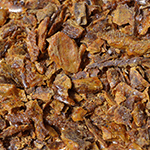History of Propolis
Propolis is a natural product that has been known and used by man for centuries. With uses ranging from mummification to toothpaste we have been taking advantage of the positive benefits of this very protective healing product for years. Here are some of the highlights:

5500 BC
Ancient Egyptians used propolis as an “embalming” substance as well as for its soothing and healing properties.

350 BC
Stemming from the Greek ‘pro’ (before) and ‘polis’ (City) and said to have been named as such by Aristotle Alexander's philosopher, propolis means 'defender of the City' because it protects the hive and its bees from bacteria and infection.

100 BC
Roman soldiers carried propolis to war to heal wounds or use as a morale-building tonic as they set out to conquer the world. The women used a propolis cream to nurture their face and bodies and help with a range of feminine health problems – they named it 'the woman's friend'.

1600
Propolis was listed as an official drug in the London Pharmacopoeias.

1914
In the first and second world wars, propolis was used by the Soviet Union in first aid to reduce wound infection and speed healing. It was nicknamed “Russian Penicillin”.

1973
Dr. Karl Lund Aagaard, a Danish biologist, earned the name “Dr. Propolis” for studies on 50,000 Scandinavian patients proving the effectiveness of propolis in treatment as well as the fact it produces almost no side effects.

1990's
Publicity started to appear regarding propolis’ benefits, with people talking about their experiences of using it to help treat a variety of health problems. Some GPs even reported how they prescribed it successfully for patients in instances where modern medicines failed to help.
